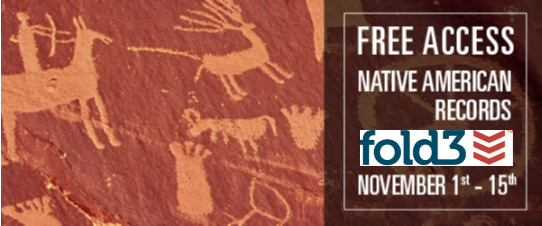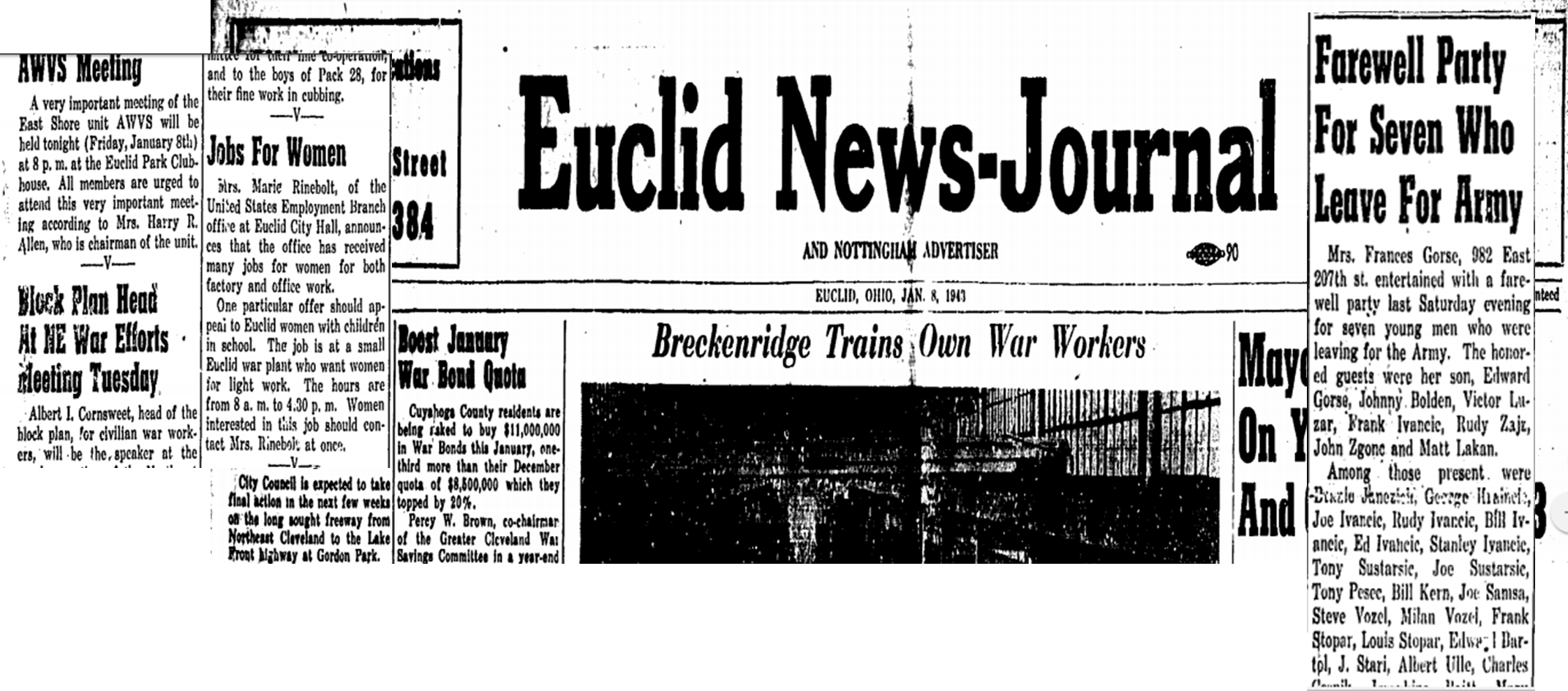How to Save Fold3 Search Results to Your Ancestry.com Family Tree
Now when you discover an ancestor’s record on Fold3.com, you can save it to your online tree at Ancestry.com.
According to Fold3.com’s press release: “Whenever you see a green ‘Save to Ancestry’ button above a document or on a Fold3 memorial page, you can link that document or page directly to someone’s profile on Ancestry.”
“You’ll be asked to log into your Ancestry.com account, and then you’ll see a drop-down list of your trees. Locate the tree you wish to save the document to, begin typing the name of the person to whom the record should be attached, choose the correct name from the list that appears, and then press save.”
Watch a tutorial video to learn more and see how it’s done.
Local Histories Found in New and Updated Genealogical Records
Search through new and updated genealogical records and histories galore. We are covering the world this week, reaching places we haven’t touched on before. Search records from familiar collections in Canada and the U.S., then check out what’s new in Russia and Ghana.

Canada – World War I
We know many of our readers have ancestry from Canada and we want to point your attention to the holdings at the Library and Archive Canada. This repository has many digital collections online and even includes a portrait portal with over 4 million images!

Today, we shine a light on just over 330,000 files now available online in the Soldiers of the First World War: 1914–1918 database.
The Soldiers of the First World War database is an index to the service files held by Library and Archives Canada for the soldiers, nurses, and chaplains who served with the CEF (Canadian Expeditionary Force.) Each box of service files holds approximately 50 files and envelopes. The individual’s name and service number or rank, if an officer, is written on each envelope. This database was organized by entering the name and number found on the outside of each of these file envelopes.
When the attestation papers and enlistment forms were digitized from the Attestation Registers (RG 9, II B8, volumes 1 to 654,) the images were linked to the database. Tip: When searching by name, be sure to look for alternate spellings as well.
The original paper documents can no longer be consulted, so your only option is to view these records digitally. For those items not yet digitized, you can order a copy from the Archives. As we mentioned, not all the documents have been digitized, but are are being done so regularly. Check back often!
United States – State and Local Histories
Findmypast has updated their United States, State & Local Histories collection and now holds 332 digitized books of state and local histories in PDF format. These histories come from Connecticut, Illinois, Indiana, Iowa, Maine, Massachusetts, Michigan, Nebraska, New Hampshire, New Jersey, New York, North Carolina, Ohio, Oregon, Pennsylvania, Rhode Island, South Carolina, Tennessee, Texas, Vermont, Virginia, Washington, Washington D.C., West Virginia, and Wisconsin.
You can narrow your specific search by publication year, title, county, and state, or search by keywords. These books often add clues and hints to the lives of our ancestors. You may also come across a biographical sketch of your ancestor which may hold key information you have been looking for.
Additionally, a sister collection titled United States, Family Histories may also prove fruitful. This collection contains over 930,000 images taken from 3,926 family histories and genealogies from all 50 states and several locations overseas. These PDF records can be searched by publication year, title, county, and state, page number, and key words. The publications emphasize tracing the descendants of the early, colonial immigrants to the United States. If you have a targeted ancestor that falls into that category, you will want to check these histories thoroughly.
United States – New York – Histories
The New York Genealogical and Biographical Record is the second oldest genealogical journal in the U.S. This week, Volume 27, Issue 2 (January 2016) of this publication is available at Findmypast. You can search or browse to find possible hints and clues to aid you in your research.
The New York Genealogical and Biographical Record is a quarterly publication, published since 1870. It publishes compiled genealogies that are documented, transcriptions of original records, and much more. To further learn about the NYG&B and their society, click here.
You might also be interested in the NYG&B’s quarterly review titled The New York Researcher. Formerly known as the NYG&B Newsletter, The New York Researcher has been published since 1970. Volume 147, Issue 2 (Summer 2016) of this publication is available now at Findmypast.
You will enjoy instructive articles on genealogical research techniques and New York resources, profiles of repositories, and profiles of genealogical societies across the State of New York.
Russia – Church Records
FamilySearch has digitized more than 2 million records in their collection titled Russia, Tatarstan Church Books, 1721-1939. Though these records are not indexed yet, you may find images of births and baptisms, marriages, deaths, and burials performed by priests of the Russian Orthodox Church in the republic of Tatarstan. These records were acquired from the state archive in that province.
Places are identified by their historical name and jurisdiction when it was part of the Russian Empire. If you are unsure of the history of your targeted location, remember what our Google Guru Lisa says…”Just Google It!”
The collection covers records from 1721 to 1939. These records are written in Russian, but remember that FamilySearch offers a helpful cheat sheet of common words and their translations!
There may be some restrictions on viewing these records. Whenever possible, FamilySearch makes images available for all users. However, rights to view images on their website are granted by the record custodians. In this case, the Russia, Tatarstan Church Books, 1721-1939 images can be only be viewed online at a Family History Center near you, or the Family History Library.
Ghana – Census
FamilySearch has also added the Ghana Census, 1984. This population census for Ghana is a complete enumeration of the 12.3 million people residing in Ghana as of midnight March 11, 1984. The census is divided into 56,170 localities. According to the government of Ghana, a locality is defined as any “nucleated and physically distinct settlement.” Localities may include a single house, a hamlet, a village, town or city. In some areas of the Upper West and Upper East Regions, these localities are based on kinship groups. Only those individuals, including foreign visitors, who were present in Ghana on March 11, 1984, were included in this census.
There have been some records lost in Ghana and so not all localities are available. Important: Be aware that the printed date on the census enumeration form usually says 1982, but this census was formally conducted in 1984.
The 1984 Ghana census may hold the following information:
- Detailed address of
 the house
the house - Name of town/village
- Full name of members present on census night
- Relationship to head of household
- Gender, age, birthpla
ce, and nationality of each individual - Level of education
- Occupation
- Employment status
- Names of visitors on census night
- Names of members absent on census night
Finding Family History in WWII Newspapers: Narrowing the Results
Newspapers can fill in the gaps to the long-lost stories of your ancestors. These tips will help you narrow your search in digitized WWII newspapers for experiences directly relating to the war and to the lives of your ancestors.

In this previous post, I provided step-by-step tips for locating WWII-era newspapers. Those tips helped you locate the actual newspapers. In this post, I’ve got 7 tips for to help you focus on narrowing down a large list of results in search of war-related family stories.
Tip 1: Try Various Name Combinations in WWII Newpapers
If you are keyword searching in digitized newspapers, remember to try different name combinations. A man may be identified by just his first initial and last name. During the 1940s, a woman might be referred to as “Mrs. Ted Johnson” instead of Barbara Johnson.
Tip 2: Search for Addresses
You might find a family identified as “the Johnson’s of 132 Cherry Lane,” so try using street addresses in your searches, remembering that “Lane” might be spelled out or abbreviated. You may also find the family listed by their town or township. An example of this might be “the Johnson’s of Brown township,” or “the Johnson’s of Conover.”
Tip 3: Expand Your Search to Events and Organizations
Use any search terms you already know about for your family in World War II: a military unit, a battle or local service organization, or a war effort project that the folks back home may have helped out with. Do family stories mention rationing, air raid drills, bomb shelters, blackout rules, or one of the women getting a job at a certain factory? All these make excellent search terms.
Tip 4: Take Time to Browse
Browsing the pages will give you a sense of how the war affected everyday life at home. You may find recipes that make the most of ration allowances and reminders about blackout rules and curfews. You may even find tips on how to conserve gasoline or how to be fashionable without silk stockings!

Almost every news item on the front page of this Jan 8, 1943 issue of the Euclid News Journal (OH) has to do with the war. It’s easy to see how the war affected everyday life of this small Ohio city on the shores of Lake Erie. Issues of this paper are searchable at the Euclid Public Library website (click image to view more issues.)
Tip 5: Be Aware of Newspaper Stoppages
If your family lived in an area that came under attack or was occupied, the local newspapers may have stopped printing. In that case, search other papers to see if they reported what was going on in your ancestor’s town.
Tip 6: Keep an Eye on the Homefront
For relatives who served in the military, watch for updates in local papers about how they were faring on the fronts during the war. Watch for casualty lists of the wounded, dead, and missing. Here’s something cool: newspapers also printed maps showing the progress of the war on the various fronts.
Tip 7: History Provides Hints
If you’re looking for reports about soldiers’ bodies returning home and funeral services, it will help to know that according to an article in The Wall Street Journal, the War Department didn’t start bringing back remains until the fall of 1947 because of the huge logistical challenges involved. Over 93,000 American soldiers who died in World War II are buried overseas in one of the American Battle Monuments Commission cemeteries.
Making the Most of Newspapers for Family History
 Find more tips like these in my book, How to Find Your Family History in Newspapers. You’ll find step-by-step instructions for my foolproof research process, along with everything you need for success: worksheets and checklists, tons of free online resources (and websites worth paying a few bucks for), a massive amount of location-specific websites (U.S. and international)–and a case study that puts it all to the test!
Find more tips like these in my book, How to Find Your Family History in Newspapers. You’ll find step-by-step instructions for my foolproof research process, along with everything you need for success: worksheets and checklists, tons of free online resources (and websites worth paying a few bucks for), a massive amount of location-specific websites (U.S. and international)–and a case study that puts it all to the test!
